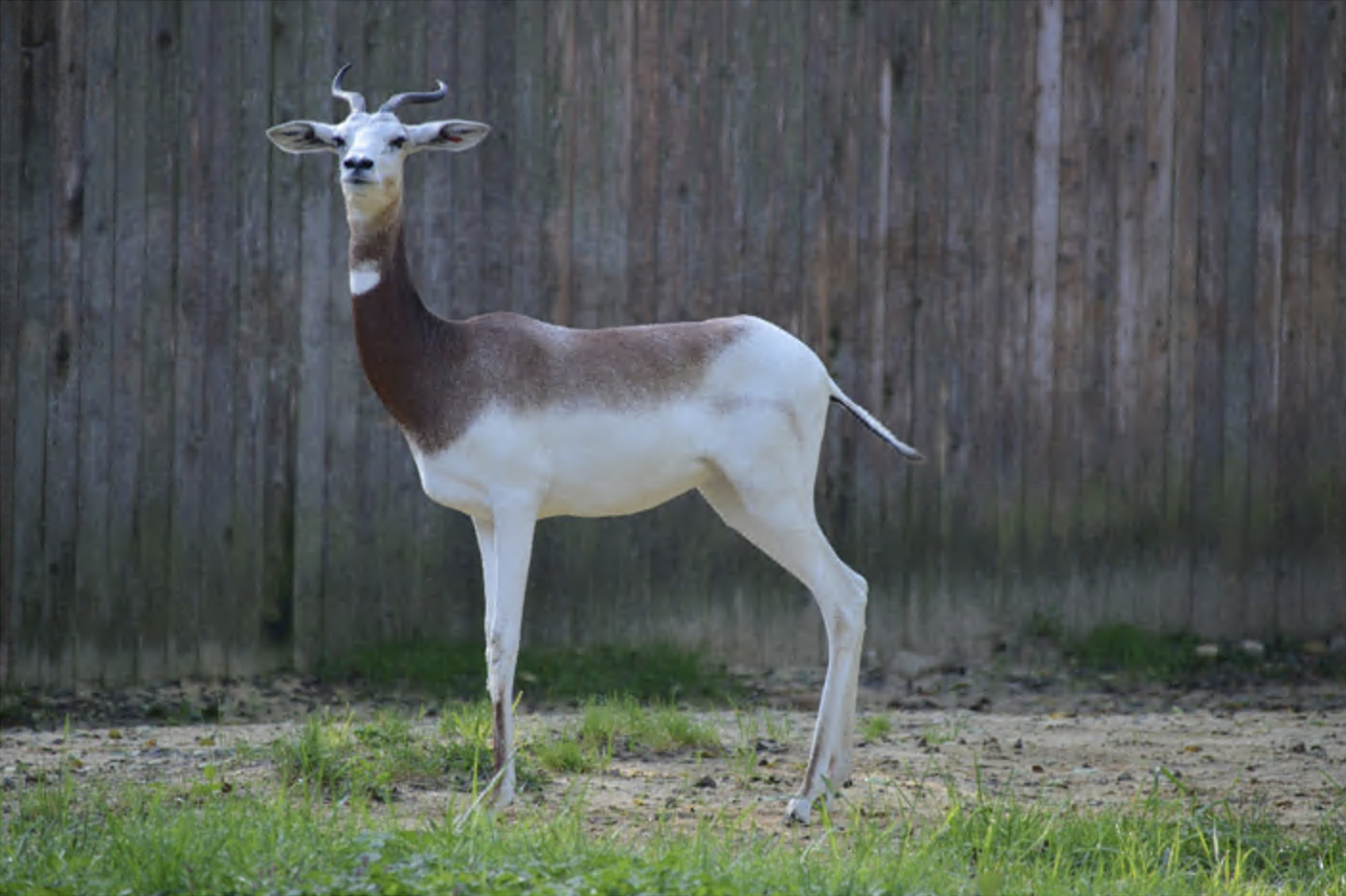Elderly Dama Gazelle Dies at Smithsonian’s National Zoo
Cheetah Conservation Station keepers at the Smithsonian’s National Zoo are mourning the loss of Adara, a female dama gazelle who was humanely euthanized Dec. 7. She was 14 years old. In human care, the median life expectancy of female dama gazelles is about 8 years; in the wild, the median life expectancy of this species is unknown. A full pathology report will provide more information in the coming weeks, but animal care staff had been monitoring her closely over the past two years for arthritis in her left knee.
In August 2018, keepers noticed that Adara was limping and appeared to be favoring—not placing weight on—her left-rear leg. Zoo veterinarians performed an exam and found arthritis in her knee. They treated her condition with osteoarthritis medication and joint injections, and her gait appeared to improve. In October 2020, she began to show worsening signs of lameness. Radiographs revealed progression of the arthritis in her left knee and a new disease in the bones of her legs that was consistent with an aggressive tumor. Veterinarians once again administered treatment, but it did not have the same effect. Although they offered Adara oral pain medication, she refused to take it. The morning of Dec. 7, keepers found Adara severely lame. Due to her poor prognosis and declining quality of life, animal care staff made the decision to humanely euthanize her.
Adara came to the Smithsonian’s National Zoo in January 2008 from Zoo Miami in Florida and participated in the Association of Zoos and Aquariums’ Species Survival Plan (SSP). The SSP scientists determine which animals to breed by considering their genetic makeup, nutritional and social needs, temperament and overall health. She contributed four offspring—two males and two females—to her species’ survival and served as an educational animal ambassador, illustrating the social nature and behavior of Dama gazelles to scientists, keepers and Zoo visitors.
Keepers fondly remember Adara as a leader of the dama gazelle herd who was good-natured and easygoing. She seemed to enjoy sparring with calves as they practiced their skills, and would also frequently spar with browse branches and hay piles. Occasionally, she would get some of the hay stuck on her horns, but keepers report that she seemed to wear these “hay hats” with pride. As a mother and grandmother, she was attentive to and protective of her four calves, and she frequently interacted with her daughter’s offspring. Keepers affectionately referred to her as the “boss lady” of the herd to whom all the other gazelles looked for direction.
As a public health precaution due to COVID-19, the Zoo is temporarily closed to the public. Two female Dama gazelles—12-year-old Fahima and 2-year-old Amaya—live at the Cheetah Conservation Station, along with two other species that share their habitat: Ruppell’s griffon vultures and scimitar-horned oryx.
Native to Chad, Mali and Niger, Dama gazelles are listed as critically endangered by the International Union for Conservation of Nature. Less than 500 Dama gazelles remain in the wild due to habitat loss from human and livestock expansion, hunting and drought. SCBI conducts veterinary and reproductive research in order to maintain Dama gazelle populations.
# # #
SI-361-2020
Jen Zoon
301-908-3102

